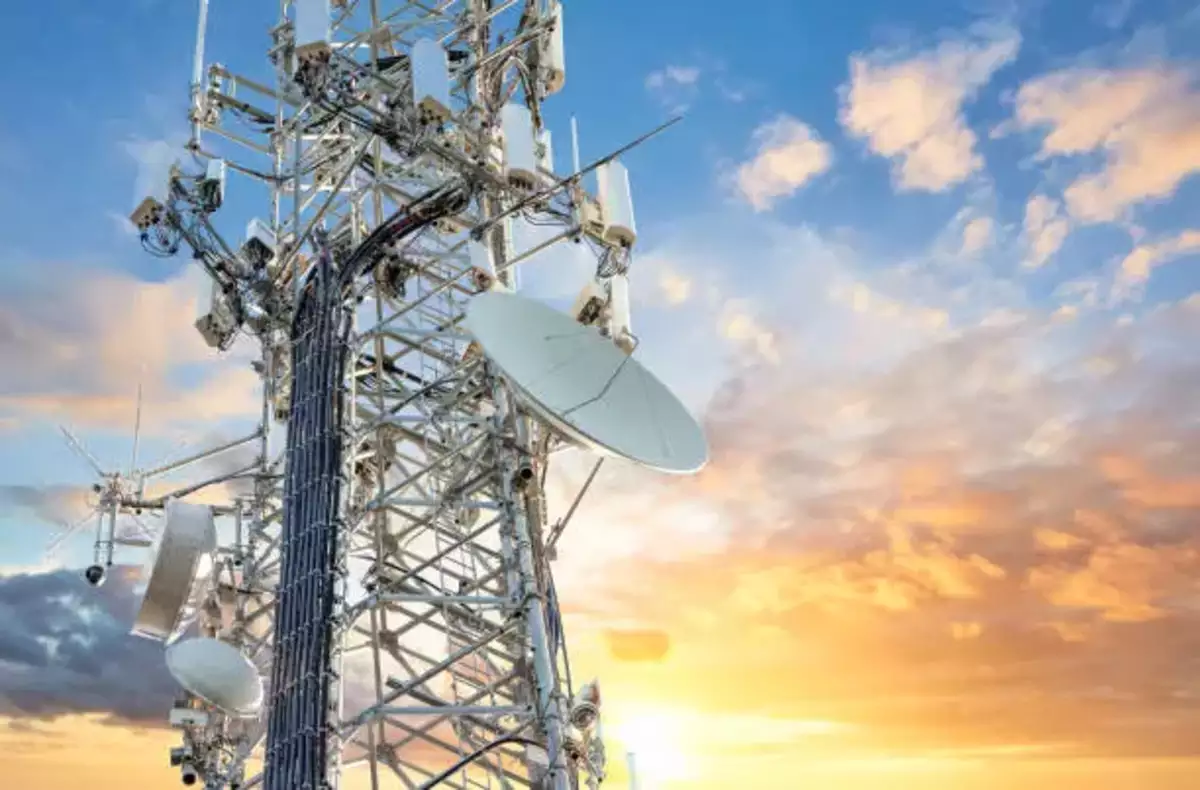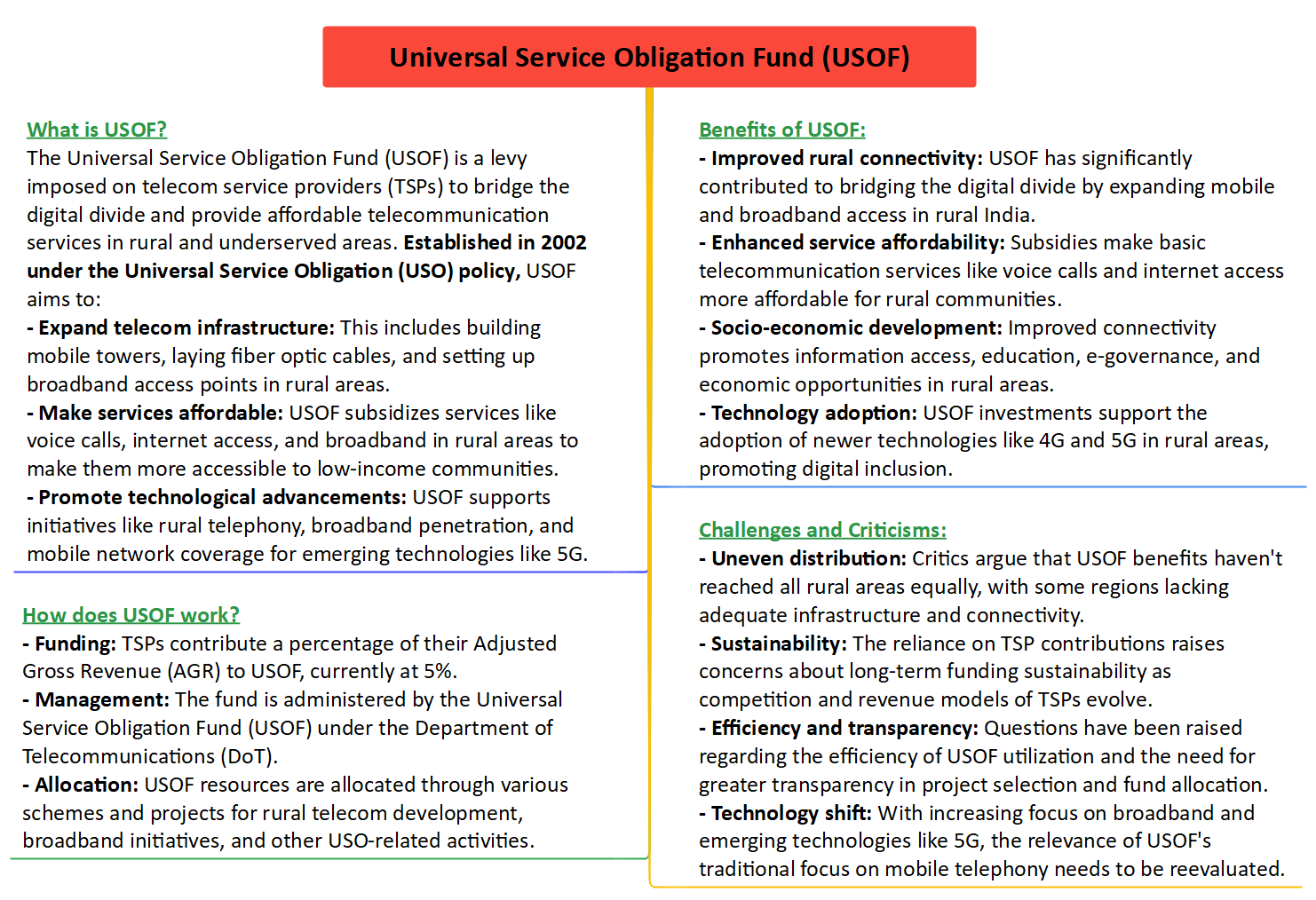Free Courses Sale ends Soon, Get It Now


Free Courses Sale ends Soon, Get It Now



Copyright infringement not intended
Picture Courtesy: economictimes.indiatimes.com
Context: The Indian telecom industry urges the government for Budget 2024-25 to eliminate the Universal Service Obligation Fund (USOF) and reduce customs duties on telecom equipment. These measures are seen as vital for industry growth and improving accessibility to advanced communication technologies across the nation.
What is USOF?
Why demand to scrap it?
Government's Perspective
Potential Outcomes

Reducing Customs Duties
Government's Perspective
Potential Outcomes
Additional Requests
Government's Perspective
Potential Outcomes
Impact on Consumers
Conclusion
|
PRACTICE QUESTION Q. How has the implementation of digital technology and connectivity infrastructure, such as high-speed internet and mobile networks, contributed to improving governance and socio-economic development in rural areas of India, and what challenges still exist in ensuring comprehensive ruler connectivity across the country? |
© 2024 iasgyan. All right reserved